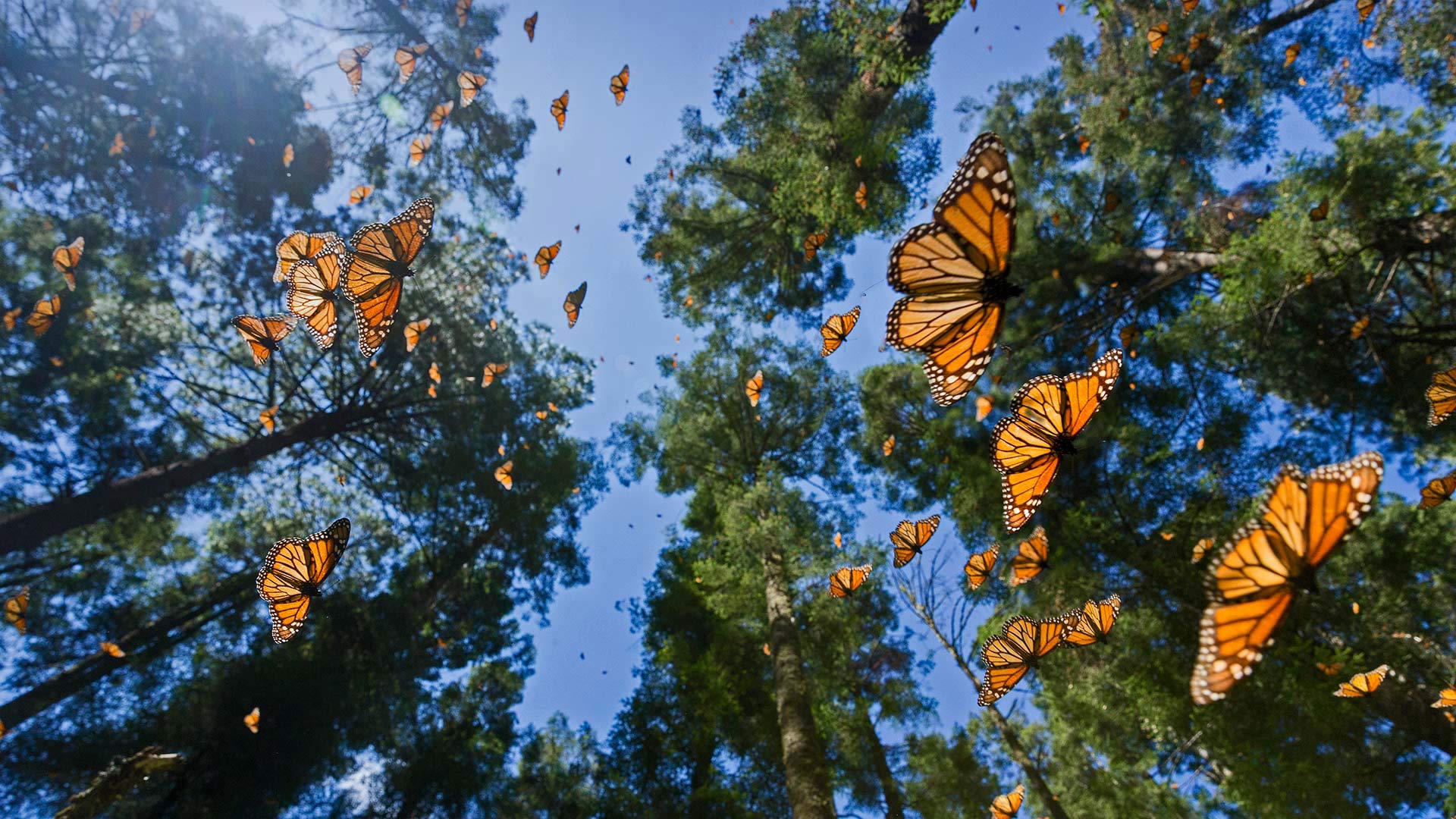漫天飞舞的黑脉金斑蝶,墨西哥 Monarch butterflies in the Monarch Butterfly Biosphere Reserve, Angangueo, Mexico (© Sylvain Cordier/Minden Pictures)

漫天飞舞的黑脉金斑蝶,墨西哥 Monarch butterflies in the Monarch Butterfly Biosphere Reserve, Angangueo, Mexico (© Sylvain Cordier/Minden Pictures)
Monarch butterflies in Angangueo, Mexico
Every year, one of the most spectacular natural phenomena in Mexico takes place in the forested mountains west of Mexico City. Between mid-January and late March, colonies of monarch butterflies migrate here from colder northern climates to find warmth and begin their breeding season. These huge flying colonies can contain as many as 20 million monarchs, which make use of air currents to travel as far as 100 nautical miles per day.
Upon arrival in the Mexican state of Michoacán, they'll settle into the forests of fir trees like those shown here, before finding their way to milkweed plants to mate and lay their eggs. The eggs will hatch after just a few days, leaving the offspring to feast on the milkweed before eventually transforming into the next generation of adult butterflies. Once the winter breeding season is over, the newly hatched monarchs will start the annual migration cycle over again, taking to the air for the long trek back north.
墨西哥Angangueo的帝王蝶
每年,墨西哥最壮观的自然现象之一发生在墨西哥城西部的森林山脉。1月中旬至3月下旬,成群的帝王蝶从寒冷的北方气候迁徙到这里,寻找温暖,开始繁殖季节。这些巨大的飞行殖民地可以容纳多达2000万只帝王,它们利用气流每天飞行100海里。
抵达墨西哥米却肯州后,它们会在这里所示的冷杉林中安顿下来,然后再找到马利筋植物交配产卵。卵在几天后就会孵化出来,让后代享用马利筋,然后最终转化为下一代成年蝴蝶。一旦冬季繁殖季节结束,新孵化的帝王将重新开始每年的迁徙周期,飞到空中进行漫长的向北跋涉。
评论已关闭